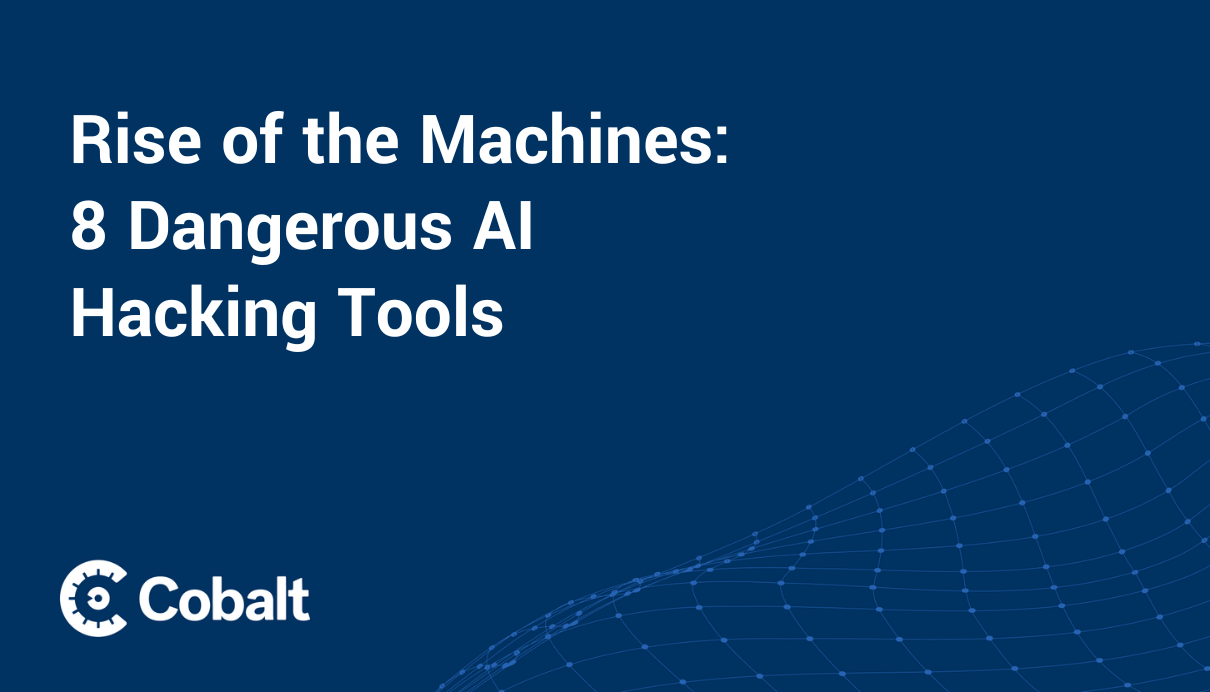Generative AI is introducing advanced methods for tackling cybersecurity. However, this technology not only empowers defenders to anticipate and counteract threats more effectively but also equips attackers with more sophisticated tools.
AI algorithms are now capable of identifying vulnerabilities in software and creating exploits that were previously unknown, speeding up the process that was once manual and time-consuming. AI's ability to analyze and replicate legitimate communication styles also results in highly convincing phishing attempts, making it harder for us to distinguish between genuine and malicious messages. It's even used to develop new strains of malware that can adapt and evolve, making detection by traditional antivirus systems more challenging.
Despite this weaponization of generative AI, it can also be used to help prevent attacks. Much like a penetration tester, AI systematically analyzes and identifies security gaps and simulates a range of attack scenarios. Still, it does so at a scale and speed far beyond human capacity. Below, we'll take a look at how generative AI is being integrated into offensive strategies to mitigate cyber threats.
AI in Automated Exploit Generation
Traditional exploit development is often a manual and time-intensive process, requiring deep knowledge of a system. However, it can automate the creation of exploits. For instance, AI systems can analyze databases of known vulnerabilities, such as the Common Vulnerabilities and Exposures (CVE) list, and generate code to exploit these weaknesses. This approach not only speeds up the process but also potentially uncovers unique exploitation methods that might not be immediately apparent to human researchers.
Generative AI can also help us discover new vulnerabilities by simulating a wide range of attack vectors. Testing them against various software and systems can help uncover previously unknown vulnerabilities. This method is akin to an advanced form of fuzz testing but with the added intelligence and adaptability of AI algorithms. For example, in 2019, researchers at MIT developed an AI model named "DeepExploit," which could automatically learn and perform penetration testing tasks. AI has evolved extremely fast ever since. Today, even plain foundational LLMs are capable of building exploits for simple cases.
AI Against Phishing Campaigns
By analyzing large datasets of legitimate communications, AI algorithms can learn and replicate the nuances of language, tone, and style specific to individuals or organizations. This capability enables the generation of highly convincing phishing emails that are challenging to distinguish from genuine communications. The level of customization it's capable of makes it increasingly difficult for both traditional security systems and users to identify and flag these communications as malicious. With today's evolution of multimodal AI, it is already easy to generate deep fake image, video and voice recordings from only short video source material, like in HeyGen.
However, AI-generated campaigns can also be used in controlled environments to train personnel and test the resilience of security systems against sophisticated phishing attempts. For example, security teams can deploy AI to simulate an array of phishing attacks on their networks to allow organizations to assess how well their employees can identify and respond to nuanced and personalized attempts. This exercise helps organizations to enhance their awareness and preparedness.
Password Cracking with Generative AI
Generative AI is significantly changing how attackers approach password cracking. By analyzing patterns in large datasets of commonly used passwords, AI algorithms can make educated guesses that are far more efficient.
Luckily, in the hands of cybersecurity experts, generative AI becomes a powerful tool for offensive security operations aimed at outsmarting hackers. One key application is in enhancing password security measures. By using AI to simulate advanced password-cracking techniques, security teams can anticipate and counteract the strategies employed by hackers.
For instance, AI can be deployed to conduct stress tests on existing password systems by mimicking the latest password-cracking methods used by cybercriminals. This proactive approach allows security teams to identify potential vulnerabilities in their password policies and authentication systems before malicious actors can exploit them. An even better proactive approach is by using state-of-the-art Multi Factor Authentication methods, where the password is one of two or more required factors used for authentication.
Using AI to Fight Malware
Utilizing generative AI, cybersecurity experts are developing more dynamic defenses against malware. Colleagues at Check Point Research were successful in analyzing malware using plain GPT-4, showing positive signs of automation potential in this area.
AI algorithms, trained on vast datasets of known malware, can identify subtle patterns and anomalies that indicate malicious code. This capability is particularly effective against polymorphic and metamorphic malware, which can alter its code to evade traditional detection methods.
Another area where generative AI is making strides is in the creation of advanced honeypots. These are decoy systems designed to attract and analyze malware, providing valuable insights into how it operates. AI-enhanced honeypots are more sophisticated and can mimic real-world systems more convincingly, thereby attracting more advanced malware.
Enhancing Penetration Testing with Generative AI
AI-driven tools are used to automate the process of penetration testing, a critical aspect of security testing. These tools can intelligently scan networks, systems, and applications for vulnerabilities much faster and more thoroughly than traditional manual methods.
For instance, AI algorithms can simulate a wide range of cyberattacks against a network to identify potential security gaps. They can perform tasks like network mapping, vulnerability identification, and exploit execution, continuously learning and adapting to find even the most subtle weaknesses. One example is the use of AI in dynamic application security testing (DAST), where AI algorithms interact with web applications, analyze responses, and identify security vulnerabilities.
Several Open Source initiatives towards security testing using AI have become known through media, like BurpGPT, a Burp Suite plugin for analyzing http traffic for potential vulnerabilities or PentestGPT for supporting with pentest planning and execution.
Combating Social Engineering Attempts
To counteract the threat of AI-generated, context-aware messages used in social engineering, advanced AI-driven defense systems employ sophisticated algorithms to scrutinize not just the content of communications but also their context and behavioral patterns. By analyzing historical communication data within an organization, AI can establish a baseline of normal interaction patterns and flag deviations that may indicate a manipulation attempt.
For instance, AI can be trained to detect subtle anomalies in language usage, tone, or communication habits that might suggest the message is AI-generated. In addition, AI can be integrated into security awareness training, providing employees with real-time feedback and guidance when they encounter suspicious messages. This helps not only in immediate threat identification but also in long-term behavioral change, making employees more adept at recognizing and responding to sophisticated social engineering attacks.
Captchas and Biometrics
To respond to the challenge of AI being used to bypass CAPTCHAs and biometric security measures, cybersecurity experts are developing nuanced verification systems with several layers of security beyond traditional methods.
For CAPTCHAs, the response involves creating more complex puzzles that AI finds difficult to solve. Recent research has however shown that AI can solve CAPTCHAs better than human, or more precisely, ”The bots’ accuracy ranges from 85-100%, with the majority above 96%. This substantially exceeds the human accuracy range we observed (50-85%)”. Future CAPTCHAs will likely be based on contextual information or require a higher level of reasoning, which current AI models struggle to replicate. Additionally, the integration of behavioral analysis, such as how a user interacts with a CAPTCHA (mouse movements, typing patterns), adds another layer of security that is challenging for AI to mimic convincingly.
For biometric security, the focus is on enhancing the detection of synthetic or manipulated biometric data. This involves using AI systems that can differentiate between real and AI-generated biometric traits. For instance, advanced facial recognition systems can analyze subtle physiological signs or patterns of movement that are unique to live humans, which AI-generated images or deepfakes lack. Similarly, for fingerprint scanners, the technology is evolving to detect the presence of additional attributes like sweat pores or pulse, which are extremely difficult for AI to replicate.
Counteracting Adversarial AI
Cybersecurity experts are employing advanced detection and response strategies in order to pit AI against itself. One approach involves training these models on a diverse set of data, including examples of adversarial inputs, to improve their ability to recognize and resist manipulation.
Another strategy is the implementation of anomaly detection systems to monitor for unusual patterns or inconsistencies in the input data. These systems can then potential adversarial attacks before they can impact the AI's decision-making process.
Identifying Network Traffic Mimicry
To counter the challenge of AI-generated network traffic mimicry, where AI mimics legitimate user behavior to evade detection, cybersecurity systems are incorporating advanced AI algorithms capable of deeper analysis. These systems focus on identifying subtle anomalies and patterns that differentiate AI-generated traffic from genuine user activity.
Additionally, these advanced systems integrate behavioral analytics, examining not just the traffic but also the context and sequence of network activities. This approach adds an additional layer of scrutiny, making it more challenging for malicious AI to blend in unnoticed.
Revealing Obfuscation Attempts
To address the challenge of AI-driven obfuscation, where AI is used to conceal the code or behavior of malicious payloads, cybersecurity experts are leveraging AI in reverse engineering and analysis processes to detect and decode code that has been intricately disguised.
These AI systems employ machine learning techniques to learn from vast datasets of both obfuscated and non-obfuscated code, enabling them to recognize patterns and anomalies indicative of obfuscation. Furthermore, AI-driven tools are being integrated into dynamic analysis processes, where they can observe the behavior of a payload in a controlled environment. Even if the code is obfuscated, the AI can analyze its execution and interactions with the system to identify its true purpose.
Using Generative AI as an Offensive Security Tool
Generative AI's ability to rapidly analyze and adapt to new threats means that cybersecurity strategies can evolve at a pace that matches, or even outpaces, that of attackers. This adaptability is crucial in a landscape where threats are constantly evolving and becoming more sophisticated. By employing AI in offensive security, experts can anticipate attack strategies, uncover hidden vulnerabilities, and strengthen defenses.
In essence, generative AI transforms the cybersecurity battleground, shifting the balance from a reactive posture to a more proactive and preemptive approach.
Explore more about this topic with LLM content related to insecure output handling.








